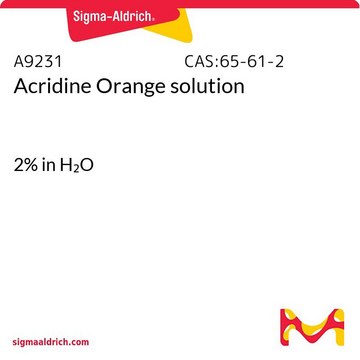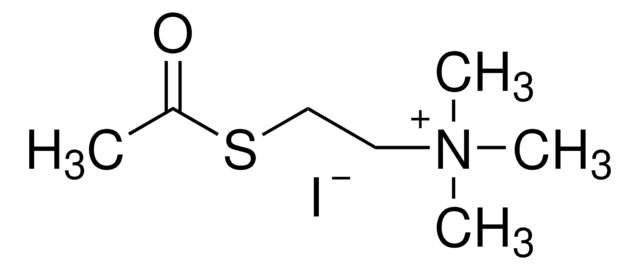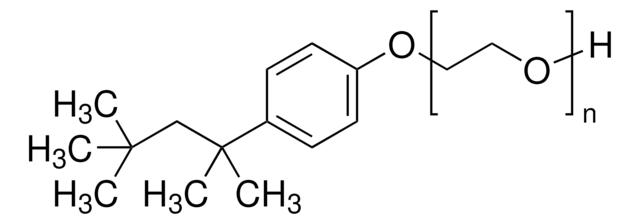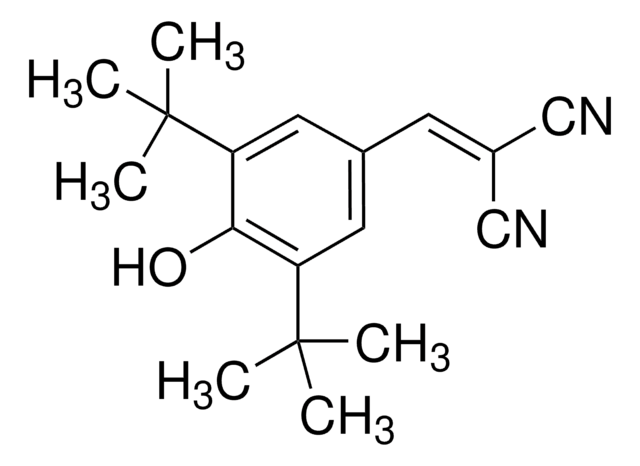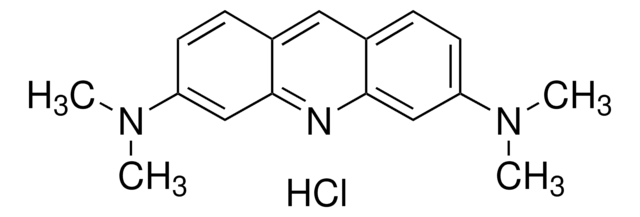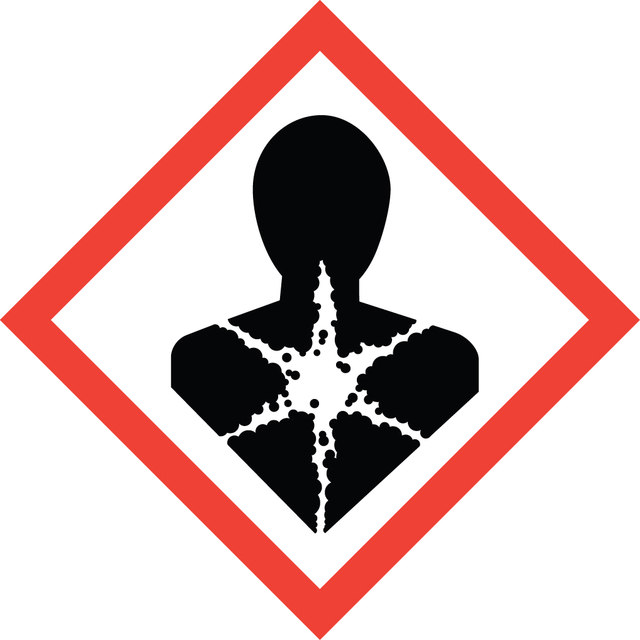113000
Acridine Orange - CAS 65-61-2 - Calbiochem
Synonym(s):
Acridine Orange - CAS 65-61-2 - Calbiochem, AO, 3,6- bis(Dimethylamino)acridine, HCl
About This Item
Recommended Products
Assay
≥98% (HPLC)
form
solid
manufacturer/tradename
Calbiochem®
storage condition
OK to freeze
desiccated (hygroscopic)
protect from light
color
burnt orange
solubility
DMF: 1 mg/mL
H2O: 1 mg/mL
ethanol: 1 mg/mL
shipped in
ambient
storage temp.
15-25°C
InChI
1S/C17H19N3.ClH/c1-19(2)13-8-9-15-12(10-13)11-14-16(18-15)6-5-7-17(14)20(3)4;/h5-11H,1-4H3;1H
InChI key
ASKSWIKIIFUEOI-UHFFFAOYSA-N
General description
Biochem/physiol Actions
Interacts with DNA and RNA
Warning
Reconstitution
Other Notes
Muro-Cacho, C.A., et al. 1995. J. Immunol.154, 5555.
Olivier, R. 1995. Methods Enzymol.251, 270.
Busch, G.L., et al. 1994. Proc. Natl. Acad. Sci. USA91, 9165.
Darzynkiewicz, Z. 1994. Methods Cell. Biol.41, 401.
Delic, J., et al. 1991. Exp. Cell Res.194, 147.
El-Naggar, A.K., et al. 1991. Cytometry12, 330.
Lopez, F., et al. 1991. Cytometry12, 42.
Gurrieri, S., et al. 1990. Biochemistry29, 3396.
Hermansen, D.K., et al. 1989. Cytometry10, 739.
Legal Information
Signal Word
Warning
Hazard Statements
Precautionary Statements
Hazard Classifications
Muta. 2
Storage Class Code
11 - Combustible Solids
WGK
WGK 3
Flash Point(F)
Not applicable
Flash Point(C)
Not applicable
Regulatory Information
Certificates of Analysis (COA)
Search for Certificates of Analysis (COA) by entering the products Lot/Batch Number. Lot and Batch Numbers can be found on a product’s label following the words ‘Lot’ or ‘Batch’.
Already Own This Product?
Find documentation for the products that you have recently purchased in the Document Library.
Our team of scientists has experience in all areas of research including Life Science, Material Science, Chemical Synthesis, Chromatography, Analytical and many others.
Contact Technical Service